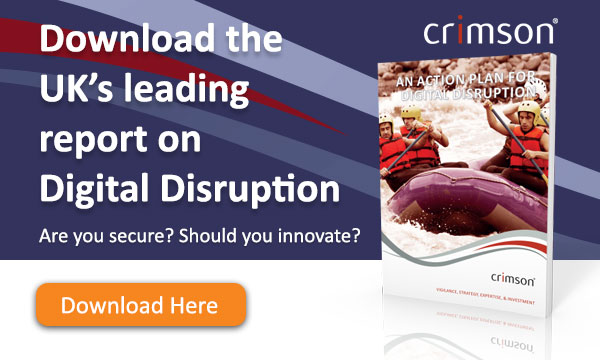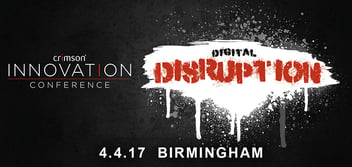The Holy Grail Of Digital Disruption: Customers Come First
Digital disruption can be a tricky challenge for CIOs to manage. In most organisations, it is the IT leader’s responsibility to guide the board through the opportunities of digital disruption and the ramifications of falling behind competitors when it comes to new market innovations.
Business models for the disruptions differ due to a number of factors, including;
- The current success of the business (is it a market leader, a new start-up, or an older organisation struggling to compete?).
- The structure of the business (is it rigid or agile?).
- The nature of the CIO (are they conservative, a sceptic, a risk-taker, an innovator?).
- The organisation’s culture (is there good cross-departmental collaboration and do managers encourage their teams to experiment and learn from their mistakes?).
CIOs have differing views of what disruption might mean for their business. Some companies are frightened of disruptions unbalancing their finely balanced equilibriums and others are excited to embrace and champion changes.
Organisations should create an IT infrastructure that can withstand and grow with external disruptions whilst creating a creating a supportive work environment that encourages staff to experiment with new ideas, which could significantly differentiate their organisation in the market place.
If you want to be an organisation that succeeds in an increasingly disruptive digital world you must remember the key ideology of disruptive innovation: ‘put the customers’ needs first’.
The retail sector is one of the most competitive, fast-paced sectors and a pioneer of digital disruption due to the growing impact of technology on consumer expectations. Increasingly, sluggish companies are being left behind because of their inability to react to change or innovate.
It has been more than 15 years since the introduction of e-commerce, which was shortly followed by mobile shopping technology, and thanks to introductions of the likes of PayPal and Apply Pay the pace of technological change continues to escalate.
Michael Klein, Director for Adobe Marketing Cloud, said: “It’s almost a constant testing ground with the consumer of what is available from a technology perspective and how fast we can think: What is the value proposition for the consumer, who is now very much in control of the brand and shopping experience?” (Bowman, ‘How is Digital Disruption Affecting The Retail Industry’, 2016)
CIOs from other industries can learn a lot from game-changing innovations and levels of engagement achieved by the retail sector. Retailers inherently understand that the customer is king and that quality and price are the pillars of success.
What’s more, people are consumers and no matter whether they work for a B2B, a B2C, the public sector, or a charity organisation, they judge quality and access to systems by consumer standards.
Here are a list of retail disruptions. Grab a note pad and jot down ideas about how similar disruptions could work for your organisation:
- Web Offers: The retail sector was one of the first industries to create web-based promotional offers and discounts. These included:
- Web exclusive products.
- BOGOFs. ‘Buy one get one free’ offers and other types of multi-purchase website discount.
- Discounts for first time shoppers on the website.
- Clubs: Join our webstore’s ‘club’ and get a lifetime of discounting.
- Price Comparison: A truly effective form of disruption for shoppers as they can compare prices of products without having to search websites individually.
- Marketplaces: Marketplaces like Amazon are enabling sellers to capitalise on the high traffic of popular websites, selling their products alongside their competitors. In the world of the online marketplace the most competitively-priced products win.
- Clickstream Technologies: Google Analytics and similar technologies provide deep insights into how customers use a website allowing CIOs and Marketing Directors to join forces in creating integrated approaches to shopping that improve user experience and increase sales.
- Customer Convenience: This is the holy grail of digital innovation and the focus of the majority of the retail sector’s disruptive ideas. These include:
- Click and collect – Buy online collect in store.
- Try before you buy at home – Try items before you buy them without leaving your house and return unwanted items in the post for free. Some companies collect directly from your door.
- Delivery – Using integrated retail distribution technology via a website or smartphone application, shoppers can now track order distribution, schedule delivery times, or return parcel quickly and easily via services like Hermes ParcelShop service. This disruption was brought about by the integration of technology between retailers’ warehouse management systems and the delivery companies’ systems.
- e-Gift Vouchers.
- Secure Payment Options: - Retailers accept payment through a wide variety of platforms and offer a range of payment terms and finance options.
- PayPal
- Contactless payment technology – This is now found on credit cards, debit cards, and smart devices using technology like Apple Pay.
- Long term credit arrangements created online – These include 52 weeks payment terms, buy now pay later, splitting payments over a period of time with no interest.
- Reward points cards and credit generating apps – These payment options enable shoppers to earn points while you shop, which can then be collected and spent on other items.
- Direct Dispatch: Direct dispatch is used by many retailers. In this model, the stock is stored by the supplier to the retailer, but sold via the retailer’s web site. When a customer purchases a product the supplier delivers it directly to the customer, via a distribution company. In this scenario the retailer never sees the stock, which reduces working capital and stock risk but allows the retailer to offer a wider product range to attract more customers. In this model, CIOs must collaborate in establishing integrations between retailer and supplier to streamline operations.
- Price Scraping: These technologies enable retailers to compare the price of the products they sell with the prices of similar items for sale on their competitors’ websites. This information allows retailers to tailor their offerings and remain competitive.
- Social Media: Retailers build social media communities around their brands to promote loyalty, share exclusive offers, and foster conversations about their latest products. Social media is a great resource for gaining immediate and direct customer feedback, responding quickly to interactions, and for analysing trends.
- Customer Voice: Comment sections, product reviews and ratings allow customers to read their peers’ opinions on products before purchasing, this is a very regularly used feature.
- A/B Testing: Retailers use a process of rerouting a subset of customers to a test website page, which differs from the page that the majority of site users will see. They measure the conversion rates on the test page compared to main page, before rolling out new ideas for web pages. This is prudent method used by retail companies as it reduces risks against fully implementing expensive miscalculated ideas.
If you would like more insights into digital disruption download Crimson’s latest whitepaper. In it a range of C-level thought leaders share their experiences and views on how to use innovation to enhance an organisation.
Crimson is an IT consultancy, an IT solutions provider, an IT recruitment agency, and a Microsoft Gold Partner with offices in Birmingham and the City of London.



